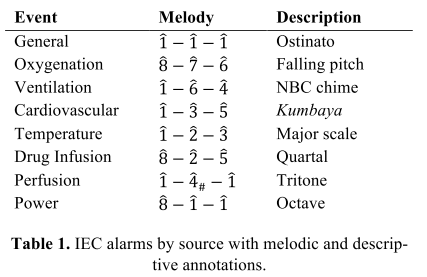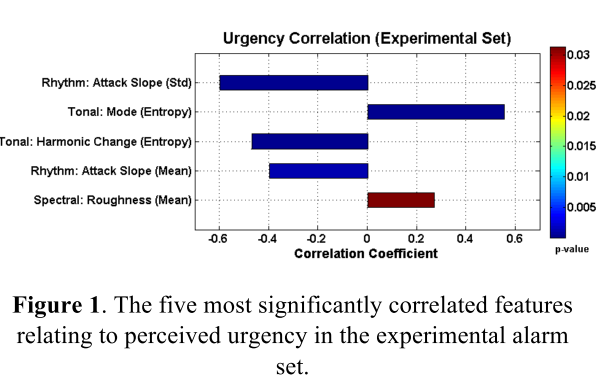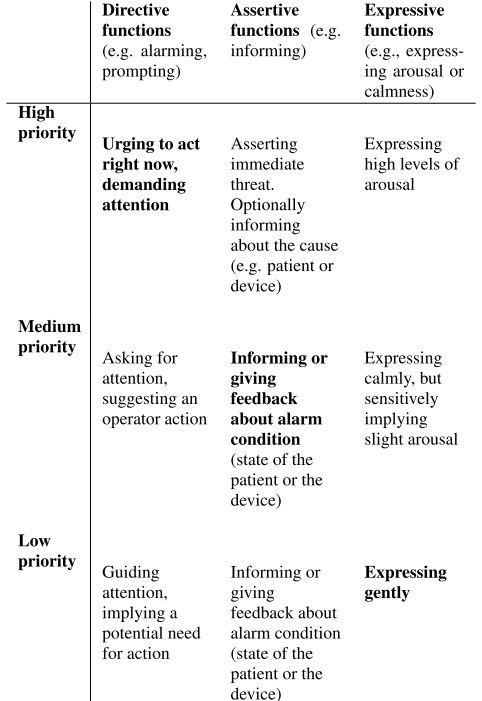Category: Healthcare
Alarm in the ICU ! Envisioning Patient Monitoring and Alarm Management in Future Intensive Care Units
Özcan, E., Birdja, D., Simonse, L., & Struijs, A. (2018). Alarm in the ICU ! Envisioning Patient Monitoring and Alarm Management in Future Intensive Care Units. In Service Design and Service Thinking in Healthcare and Hospital Management (pp. 421–446).
This article is fresh out of the oven!
The ICU’s in hospitals are equipped with advanced technology to increase the survival of the critically ill patients. Nevertheless, this same technology and their alarms has failed to work as a tool by clinicians: “long exposure to medical alarms induces alarm fatigue in clinicians and can cause patient delirium, or post-traumatic stress disorder” (pp. 422).
In this paper, the authors propose a new way to monitor patients and manage alarms inside an ICU. They state that how monitoring technology is used nowadays is not very different from when it emerged, in the 1950s, thus a revisit to patient monitoring is necessary.

The premisse of the paper is that in the future, the hospital will have more critical cases in-house than regular cases. The latter will be monitores from distance. Thus an intelligent and seamless use of data is needed. One of the measures to achieve this is having a Central Alarm System: ” (…) It would be worth considering removing all sound from the medical devices and create a separate product dedicated to producing a specially designed set of sounds based on the data provided from the several monitoring devices in the ICU.” (pp.437).
The authors described their vision of the the future inside the ICU, and the interesting part is that they have showned it to experts in the field for validation.
The machine that goes “ping!”
My main research focus are the audio warning signals used in healthcare. Being a big fan of Monty Pyhton, I was surprised when I heard they had a satire on health equipment, particularly about the machine that goes ping!
This is a great introduction to the subject!
Urgency Analysis of Audible Alarms in The Operating Room
Bennett, C., McNeer, R., & Leider, C. (2011). Urgency Analysis of Audible Alarms in The Operating Room. In International Society for Music Information Retrieval Conference (pp. 771-776).
The objective of this study was to observe the acoustic features of audible alarms used in intraoperative environments. IEC-recommended alarms were used. The following table ilustrates these alarms, differentiated by various short melodies.
The first goal was to observe the primary salient auditory features of the IEC alarm set and to compare it to those of the experimental set. The second goal was to investigate the acoustical correlates of urgency perception.
Besides IEC sounds used as control stimuli, a new experimental set was developed by applying various audio effects to a pure-tone carrier; Since IEC alarms only manipulate melodic and temporal features, the experimental set manipulated: amplitude modulation, waveshaping, frequency modulation, phase randomization, and other basic sound synthesis and processing techniques.
Participants were presented 8 IEC alarms and 7 experimental alarms via two loudspeakers. Their task was to perceptually rate the stimuli on a 9-point Likert scale according to their perceived sense of urgency, anxiety, attention, and severity.
Results
The results showed that urgency was collinear (R2 = 0.95) with all of the other descriptors. As a result, the other descriptions (anxiety, attention, and severity) were removed from further analysis.
IEC alarms exhibited one auditory feature correlated with urgency, and the experimental alarms exhibited five.
Combined analyses of both data sets indicate that changes in an alarm’s spectral features over time are the largest contributor to perceived urgency.
Communicative functions of sounds which we call alarms
Pirhonen, A., & Tuuri, K. (2010). Communicative functions of sounds which we call alarms. In Proceedings of the 16th International Conference on Auditory Display ICAD 2010 (pp. 279-286).
This paper caught my attention because it provides qualitative guidelines that can shape a good alarm sound. The methodology used to gather the information is also very creative, and it’s good to see there’s a world beyond frequent frequencies, loudness and intervals. The setting is an anaesthesia workstation.
The method used was the RUS – Rich Use Scenario. This method focuses on the experiences of the user as a person, and so it uses lively stories with a rich imagery of how a product or application is used under an envrionment familiar to the listener or reader – they shoul feel identified with the story. In brief, the method intends to answer: How would the character experience this or that idea?
In this case RUS was applied as a radio play. According to the authors, this means of presentation is suited for the brainstorming of sounds. The procedure was the following:
1. The manuscript for the radio-play was prepared in cooperation with the experts in the context (usability experts of the manufacturer).
2. The radio play was implemented. In the radio play, the sounds-to-be-designed appear as points of ”missing” sound effects, allowing them to be imagined.
3. Two design panel sessions were organised. The participants were six students of different subjects. However, none of the participants had medical science as a major subject, i.e. the participants were amateurs in terms of the context. In the sessions, the participants planned and implemented appropriate sound effects at the given points of the radio-play (which were sounds from the anaesthesia workstation).
4. On the basis of the work of the non-expert design panels, draft sounds were implemented and embedded in the radio- play.
5. Two expert panel sessions, each made up of two anaesthesia nurses and one doctor, were conducted. In the sessions, the final radio-play, including the sound effects, was listened to and discussed.
6. A post-questionnaire was sent to all expert panel participants.
7. The discussions of the expert panels were transcribed and analysed.
Analysis
The analysis was made to four different sounds for different conditions representing different levels of warnings in an anaesthesia workstation. It consisted in transcribing the participant’s opinions on the proposed sounds, and how could they be improved. Here’s an example for a “Medium Priority Alarm”:
The draft sound was produced with a metallophone. It consists of series of two damped hits at approximately 1 sec. intervals (D# tone, medium register). The events causing the alarm condition in the scenario were:
• Blood pressure has exceeded the alarm level (patient based alarm)
• The entropy meter is badly connected (device based alarm).
General observations concerning design principles:
• In expert panel 1, the events of the scenario were found different in priority:
. . . but I think that if blood pressure has really been too high, it is quite different and requires different reaction than a badly connected entropy sensor – if it has not been pushed in tightly enough thus losing contact.
• Expert panel 2 wished medium-level alarms to be merely informing rather than alarming:
. . . It has to be noted, that ‘aha’, but not anything more severe, let’s sign for it in a few minutes. But if you are busy with other, important tasks and that is tapping away all the time in the background, it would rile.
. . . it obviously depends on the scale – what is classified as important.
Opinions about the draft sound:
. . . Perhaps a bit too feisty. . . kind of loose. . .
. . . should not be that dense. . . . . . I don’t like that metallic tone, it’s irritating. . . . . . [should be] somehow softer. . .
. . .Were there two taps? Perhaps rather. . . well it de- pends on the qualities of the sound but perhaps one of that kind would be good.
. . . since there were two of them [taps], it made it kind of commanding, like ‘hey, . . . !!’
Features of the sound:
• Medium-level alarm should not be too loud, obtrusive nor frequent.
. . . perhaps high priority alarm should be something like this (tapping continuously) to grab attention, but these kind of sounds in which no immediate reaction is necessary, perhaps simple [“bø:b] would be adequate.
• On the other hand, it should be snappy and adequately startling.
• Soft, non-metallic timbre would be desirable.
• Single-tone structure (instead of two tones) and longer pause between repetitions (at 10-15 sec intervals) was proposed.
The comments indicated that the challenge is to design low and medium priority alarms, for most of the times they startle or irritate, and participants stated they should be softer, less metalic. The main conclusions:
High priority alarms
• Sounds can clearly be even more alarming – in terms of perceived urgency – than the sounds which follow the standard.
• Even if it can be assumed that there is an immediate reaction to the alarm, continuous alarm signals are not recommended.
• Melodic structures do not seem to be perceived as alarming; possibly quite the contrary.
• Percussive sounds appear to be favoured, at least by our panels, i.e., the underlying mental model or action model is to warn by beating, stamping, knocking etc.
Medium priority alarms
• The sound needs to get attention, but excessive commanding or sharp quality should be avoided.
• One single soft sound object, repeating at about 10 second intervals, could be adequate. The alarm sound ISO standard provides an appropriate guideline for the frequency of repetitions.
• Sound objects could be constructed in terms of the burst definition in the ISO standard. The strictly defined structure of burst should be broken up, though. Sound objects do not need to be mechanical, beeping pulses either.
• Attention should be paid to the timbre and internal dynamics of sounds. Crucial factors in the perceived softness are onset (attack) and offset (release) phases of a sound object and the legato between separate objects.
• Percussive sounds did notwork in the panels. The related action model should be softer than beating, e.g. arched swing, circular movement or waves.
• Even though it is a question of an alarm, the dominating communicative function should not be commanding or
alarming, but something more subtle.
Low priority alarms
• The sound should be noted, but all commanding or sharp qualities should be avoided.
• Close resemblance to a medium-priority alarm, but more subtle, soft, ”round”, simpler in structure and more
peaceful.
• Alarming qualities – in the traditional manner – should not be included at all.
• One single, very subtle sound object, repeating at 15-30 second intervals. The standard is a good basis for defining the interval.
• A burst consisting of two melodic sounds, suggested by the standard, appears too obtrusive for low priority alarms.
• Communicative intention should be to guide attention or inform with subtle, pleasant means. A commanding or alarming quality is not at all appropriate.


